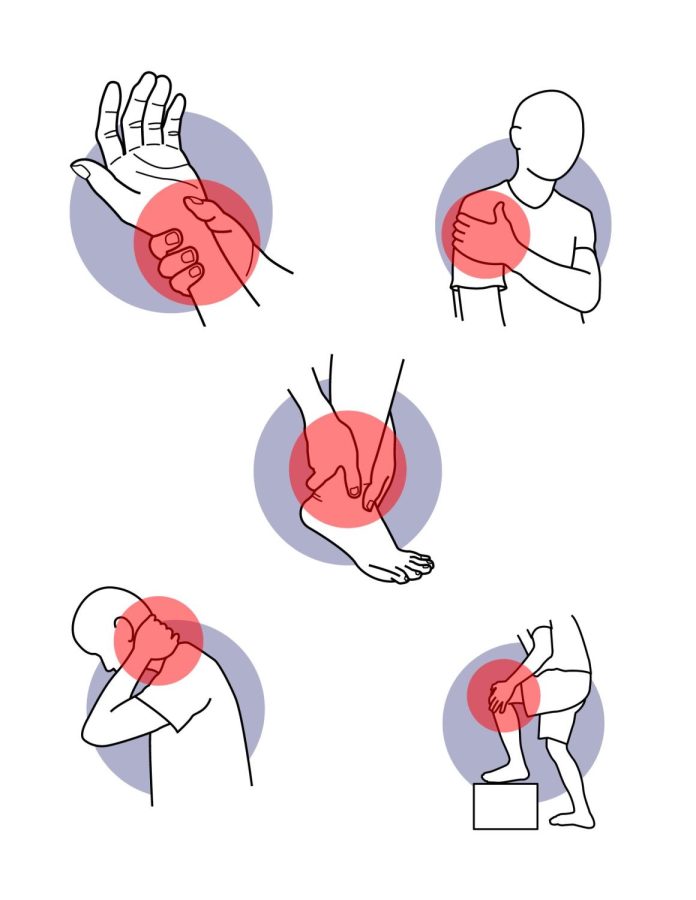The Dark Side of Sports Injuries
Artwork illustrating several injuries that are common in sports such as concussions, ankle and wrist sprains, and knee pain. Time away from sports may vary, depending on how severe the injury is and can cause a major set back. Graphic by Sydney Hogancamp
April 19, 2023
With 19 different athletics programs to choose from at SJHHS, many students on campus find themselves involved in sports teams. Due to the constant exposure to physical contact at practices and games, student athletes face the risk of obtaining injuries throughout their athletic careers.
While injuries can significantly change an athlete’s physical abilities, it can also take a toll on their mental health. When obtaining an injury, players are forced to take time away from their sport for recovery, in hopes that they will return quickly.
Some injuries may take weeks to recover from – others take years.
Typically in professional sports, discussions revolve around major team victories and losses. However, over the past year, sports injuries have escalated in attention.
After suffering from cardiac arrest and collapsing during a match, Christian Eriksen, a footballer for Manchester United, thought he would never see the field again. Likewise, Damar Hamlin, a safety for the New York Buffalo Bills, faced cardiac arrest after making a tackle.
Quarterback Trey Lance, who plays for the San Francisco 49ers, had a season-ending injury after breaking his ankle in the second week of the season. United States Women’s soccer player (USWNT) goal scorer, Mallory Swanson tore her patella tendon in her left knee, in a match against Ireland. This injury prevented her from competing in this year’s World Cup in Australia.
High School athletes can, too, face unexpected injuries that can put a toll on their career.
Senior varsity soccer player, Mya Drinkwater tore her anterior cruciate ligament (ACL) during a game this season. An ACL tear can take up to a year of recovery and usually requires surgery and physical therapy.
“It’s hard because I’ve played soccer my whole life and having to put a pause on that in one of the most important seasons of my life is something I never thought I would have to do,” said Drinkwater.
Due to her injury, Drinkwater was forced to the sideline, missing out on playing during her last soccer season. This injury was frightening to Drinkwater, as she plans to attend Belmont Abbey University next fall, continuing her soccer career at the collegiate level.
“My injury changed my whole season and freshman college season. Not being able to play my senior year with all my friends was devastating,” said Drinkwater.
Academic scholarships are much more secure than athletic ones. Depending on the school, student athletes can have their scholarship pulled if they face an injury during their high school season. Because of this, student athletes worry about how a serious injury could affect their future athletic career.
Varsity track athlete, sophomore Cailyn Hill has also suffered many injuries throughout her career, including pulled and strained muscles.
“It affects me tremendously because it’s painful to run. When you stop running for a long period of time you get slower and it makes the recovery harder,” said Hill.
Hill explains that injuries can be a large setback in students’ athletic careers, but that it’s important to remain positive throughout the recovery process.
“I missed a whole season and that set me back so far, I am now still, trying to make up for the time I have missed,” said Hill.
According to John Hopkins Medicine, trainers advise student athletes to stay hydrated, take a cooldown after exercise, and do stretching exercises to help injury prevention.



